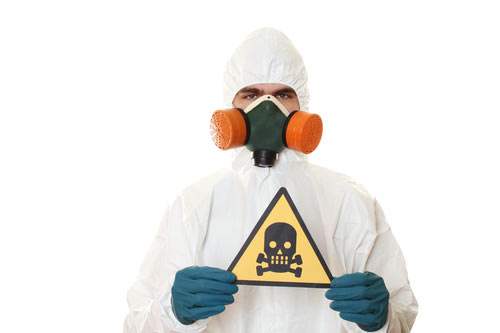Is All Mold Toxic?
 The term "toxic mold" has become a catch-all phrase applied to nearly every instance of fungus found indoors. As a result, the line has become blurred as to what varieties actually are toxic mold and how their presence affects your home or business.
The term "toxic mold" has become a catch-all phrase applied to nearly every instance of fungus found indoors. As a result, the line has become blurred as to what varieties actually are toxic mold and how their presence affects your home or business.
In reality, the phrase has little relation to actual levels of mold toxicity. Here is a look at the facts and myths surrounding toxic mold.
What is toxic mold?
Strictly speaking, toxic mold is somewhat misleading. The term applies not to the mold itself but to mycotoxins – chemicals that are produced and released by mold. Scientists remain unclear as to the purpose of mycotoxins because they are not necessary factors for mold growth.
Types of toxic mold
While "toxic mold" and "black mold" are often used interchangeably, they are not synonymous. Not all toxic molds are black, and vice-versa.
Stachybotrys chartarum is the type properly identified as black mold, and the one usually referred to when discussing mold toxicity. Aspergillus, another toxic mold and one of the types most commonly found indoors, appears in a number of colors including gray, gold, and yellow- or blue-green.
Mold toxicity and health hazards
While mycotoxins do create mold toxicity, it's rare that humans can be exposed to levels high enough to be fatal. That doesn't mean toxic mold is completely harmless. They hold many of the same dangers that other mold types do.
According to the Centers for Disease Control, here are some of the major health hazards presented by mold toxicity:
• Mold can trigger allergic reactions and upper-respiratory symptoms such as wheezing, coughing and sneezing, even in people with no history of allergies. Other less frequent symptoms include fatigue, nausea and skin inflammation.
• Individuals with asthma can be prone to more frequent attacks. Some people develop a condition called hypersensitivity pneumonitis that causes inflammation in the lungs and presents flu-like symptoms. At this time, researchers suspect that this tendency is genetic.
• People with compromised immune systems or an underlying lung disease are vulnerable to fungal infections.
• Studies have shown a possible link between childhood asthma and early exposure to mold. It's been suggested that mold could be a risk factor for idiopathic pulmonary hemorrhage, a rare lung disease found in infants, but to date, no actual association has been proven.
How to treat for mold toxicity
If you find an infestation in your home or business, identifying the type and level of mold toxicity is less important than the need to eliminate the mold. As mold reproduces by spores that become airborne, it is important to treat aggressively and quickly.